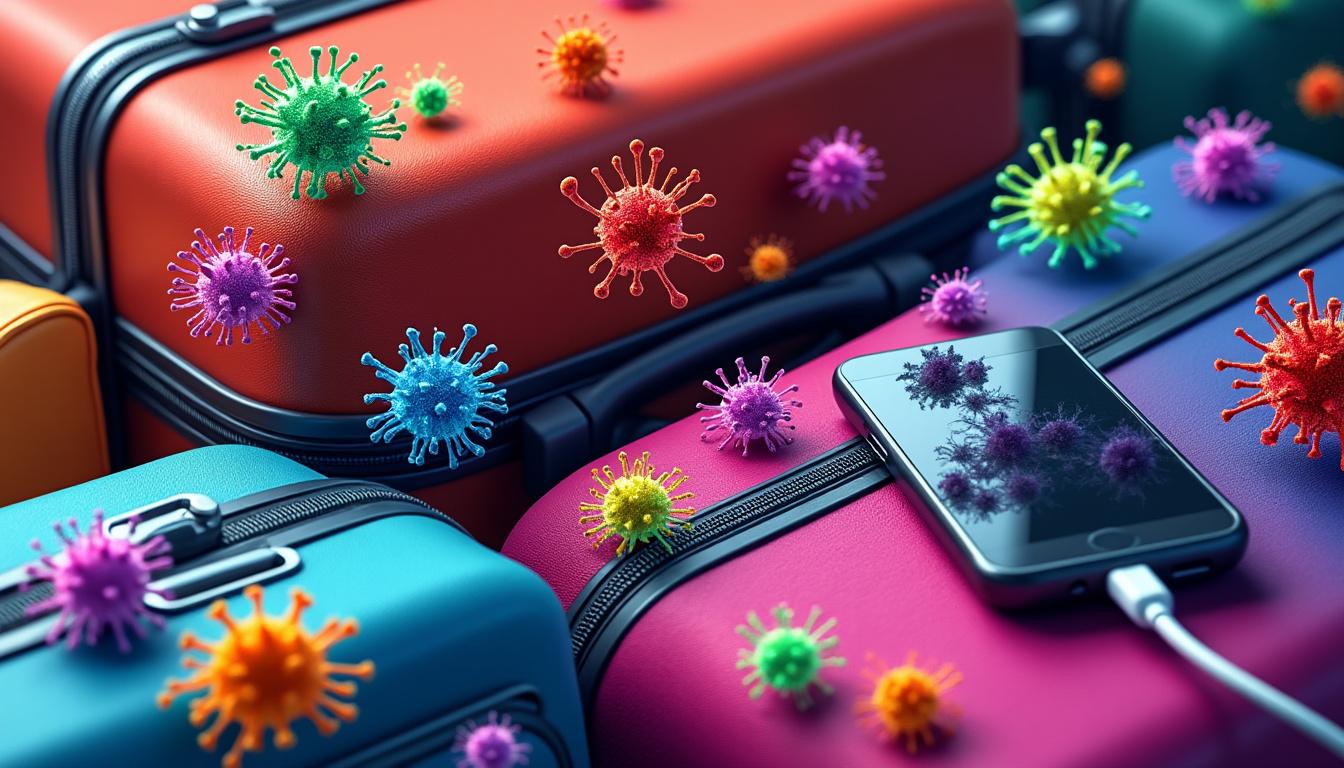Amidst the constant hustle of modern travel, discovering the unseen threats abroad can be just as vital as sightseeing. A recent study from microbiologist Amy-May Pointer has shattered common hygiene assumptions by revealing that a certain travel item harbors nearly 60 times more bacteria than even the notorious public toilet seat. For travelers aiming to stay healthy and enjoy their journeys fully, understanding the true germ hotspots extends far beyond hand sanitizers and masks. In fact, the everyday luggage we rely upon daily may be covertly harboring a dangerous microbial cocktail, demanding vigilance, innovation, and elevated hygiene strategies, especially with 2025’s increased global mobility.
Discovering the Dirt: Why Your Suitcase Beats Toilet Seats in Germ Levels
While airport terminals, airplane interiors, and hotel surfaces are expected to harbor germs, travelers often overlook the microbial risks carried by their own baggage. The comprehensive study found that suitcase wheels are particularly contaminated after enduring contact with myriad unsavory environments—from grimy bathroom floors to urban sidewalks.
This startling revelation highlights the critical need for integrating hygiene solutions such as GermGuardian, SaniPack, and HygieneHero products into travel routines, ensuring travelers avoid becoming carriers of unwelcome bacteria.
- Wheels carry nearly 58 times more bacteria than public toilet seats.
- Black mold commonly found on wheel surfaces poses additional health risks.
- Undersides and trolley handles of suitcases equally harbor heavy bacterial loads.
- Frequent exposure to contaminants from airports, public transport, and accommodations.
| Suitcase Part | Bacteria Level (CFU/3 cm²) | Relative Contamination vs Public Toilet Seat |
|---|---|---|
| Wheels | 400 | 58x |
| Underside Surface | 320 | 46x |
| Trolley Handles | 280 | 40x |
| Public Toilet Seat* | 7 | — |
Essential Tips for Travelers to Combat Germs on Their Luggages
Incorporating germ-fighting measures into packing and travel rituals can drastically reduce the risk of contamination and infection. Leading brands like TravelMate and NomadClean have designed specialized cleaning kits adapted for wiry travelers.
- Sanitize wheels and external suitcase parts regularly post-travel.
- Use protective covers such as GermFreeGear during airport transit.
- Disinfect trolley handles before and after use with portable sanitizers like SafeJourney.
- Opt for antibacterial suitcase materials whenever possible.
Further travel health insights are covered in useful resources like summer travel strategies and seasonal travel advice.
Travel Hygiene Beyond the Obvious: Avoiding Germ Traps in Your Itinerary
Hygiene concerns extend beyond luggage. Frequent touchpoints such as hotel remote controls, switches, and public transport seats often contribute heavily to cross-contamination. The CleanTraveler concept emphasizes a holistic approach by combining personal habits with environmental awareness.
- Disinfect all hotel room controls and high-touch surfaces upon arrival.
- Carry pocket-sized sanitizers and wipes to tackle commuter surfaces.
- Engage in frequent hand washing and use HygieneHero wipes as a quick alternative.
- Incorporate eco-friendly cleaning for travel gear aligning with EcoTravel values.
| Travel Environment | Common Germs Found | Recommended Products |
|---|---|---|
| Hotel Rooms | Staphylococcus, E. Coli | SaniPack, HygieneHero |
| Public Transport | Pseudomonas, Fungi | SafeJourney, GermGuardian |
| Airports & Airplanes | Diverse bacterial colonies | TravelSafe, NomadClean |
Integrating Hygiene Innovations Into Travel Planning
As awareness grows, travelers and industry players alike advocate for smarter solutions. Sustainable travel advocates draw attention to cleaner, safer options that minimize microbial risks without compromising environment-friendly principles.
- Adopting reusable yet antibacterial travel essentials.
- Using UV sanitizing gadgets endorsed by GermFreeGear.
- Employing TravelSafe-compatible luggage with antimicrobial coatings.
- Participating in educational programs on cleanliness such as those linked below.
Travelers seeking detailed guidance on maintaining health can explore expert advice on various topics such as cybersecurity and travel, managing travel with sensitive skin, and efficient packing strategies for savings.
Frequently Asked Questions About Travel Hygiene and Suitcase Contamination
-
Why are suitcase wheels so contaminated compared to other parts?
Wheels regularly come into contact with highly contaminated surfaces such as public sidewalks, airport floors, and bathroom areas, accumulating increased bacteria and mold over time.
-
How often should travelers clean their luggage to avoid bacterial buildup?
After each trip, focusing on wheels, undersides, and handles with antibacterial wipes or sprays significantly reduces microbial presence.
-
Are there specific products recommended for cleaning luggage effectively?
Yes, solutions branded under TravelMate and GermGuardian are designed for convenient and thorough cleaning suited for various travel situations.
-
Can antibacterial suitcases prevent germ transmission entirely?
While antimicrobial materials reduce bacterial loads, complementary practices such as regular cleaning and personal hygiene are essential for maximum protection.
-
What other travel habits help limit the risk of infection?
Consistent hand washing, disinfecting high-touch surfaces at hotels and airports, and using portable sanitizers like those from SaniPack and SafeJourney improve overall travel health.


